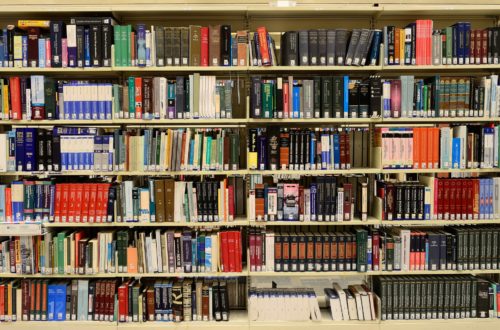Journal of the Mathematics Council of the Alberta Teachers’ Association
Volume 40 Issue 2, September 2003
The Image of Mathematics and Mathematics Teaching
Real teachers in real schools in Alberta face real challenges as they implement the intended mandatory program of studies at the various grade levels. Although many teachers are excited about the possibilities for new kinds of instruction, they feel bogged down by the overwhelming expectations about how they should provide that instruction and by the public image of mathematics.
The public image of mathematics is not the best. The work of mathematicians is not considered an important contribution to our civilization. Part of the difficulty lies with mathematics itself, because it presents abstract concepts and images to a public inundated with pictures that are concrete and real. As a result, mathematicians have the tough job of putting mathematics in the right light. Another part of the difficulty lies with the mathematicians, because many of them are unwilling to demonstrate the importance of their work to the general population out of fear that the flawless image of mathematics will be damaged. Yet another part of the difficulty lies with the curriculum content and instructional strategies in the mathematics classroom. Such mathematical content and instructional strategies have little hope of emerging unless there is an educational environment in which teachers teach against external assessment structures completely aligned with the intended curriculum. Schools must become places where students have access to mathematical knowledge and where student engagement in learning is merited by the mathematical content and the instructional strategies.
The public, including the students, generally believes that mathematics is uninteresting, too abstract, difficult to digest and devoid of exciting new developments. Although our program of studies-its rationale, emphasis and goals-reflects the rich cultural heritage and dimensions agreed upon by curriculum developers, the cultural heritage is in a form that students can readily consume to succeed on the external exam.
Although mathematics is one of the oldest scientific fields and the most widely taught subject in schools worldwide, it suffers from an image problem. Mathematicians and mathematics educators have a great responsibility for the mathematics education of future generations. What educators teach in the classroom or present in lecture theaters not only is important for the immediate mathematics needs of the students but also has, in the larger perspective, a significant impact on the image of mathematics in society. Mathematics meets a real need in modern societies and individuals. All teachers of mathematics-from the elementary to the post-secondary level-must think about these issues and, above all, be ready to act to improve mathematics teaching at all levels.
The world over, mathematics is taught as an important subject. Why is mathematics so important? Mathematics teaches children to think-much sooner than in the other subjects and requiring often very little knowledge. Mathematics provides endless possibilities for creative thinking at a high level, unrestricted by authoritarian principles, using common sense and the flight of the imagination. It allows students to unravel the beautiful patterns and the connections to other branches of human activity and thought.
But are we really achieving these ends? Is mathematics, as taught today, really imparting to our students the freedom and pleasure of thinking and generating knowledge? Or are the goals so eloquently stated in our program of studies just empty slogans, mere declarations of importance?
The everyday reality is that in some places of learning mathematics is boring and empty, and in others it is too difficult and a source of constant frustration. Mathematics is seldom what it should be. Why is this the case? Here are only two possible causes: ( 1) we have not gone beyond the traditional use of the textbook, and (2) we feel that the usual subject matter of mathematics is not suited to original thinking and learning through exploration and discovery.
What needs to be done? What is the role of teachers in engaging students in learning mathematics?
- Teachers must establish an atmosphere in which mathematics and learning are important and in which students feel safe to take risks and share ideas.
- Teachers must create activities and tasks in which students will engage their intellect, stretch their thinking, increase their mathematical understanding and solve relevant problems.
- Teachers must decide on the discourse in their class, which includes deciding how students will interact with each other.
- Teachers must reflect constantly on the teaching and learning that take place in the classroom.
- Teachers must constantly assess the direction in which the students are going and then make adjustments to ensure mathematics learning.
- Teachers must assess the needs and talents of the students, giving the students responsibility for their own learning while knowing when more guidance is needed.
- Teachers must ensure that students make the correct mathematical connections to other concepts and subjects.
- Teachers must constantly upgrade and develop professionally to remain current.
- Teachers must encourage students to become mathematics teachers and not just counsel them to pursue careers in other mathematics-related fields.
- Teachers must have patience and perseverance to develop students to their fullest potential.
The image and the teaching of mathematics are very much influenced by the beliefs and values of the mathematics teachers. To change this image, we need to address the characteristics that prevent teachers from focusing on the intended curriculum.
Klaus Puhlmann
1- 3
4 – 5
Editorial: The Image of Mathematics and Mathematics Teaching
Klaus Puhlmann
6
Cynthia Ballheim
7
Deanna Shostak
8 – 10
What Is a Good Mathematics Teacher? How Do We Find One?
John C. Egsgard
11
12 – 13
NCTM Standards in Action The Measurement Standard
Klaus Puhlmann
14 – 19
Teaching Geometry and Measurement Through Literature
Sara Delano Moore and William P. Bintz
20 – 24
Suzanne Levin Weinberg
25 – 31
A Dynamic Way to Teach Angle and Angle Measure
Patricia S. Wilson and Verna M. Adams
32 – 37
Let’s Do It: Measurement for the Times
Mary Montgomery Lindquist and Marcia E. Dana
38 -39
Art Jorgensen
40 – 48
Activities for the Middle School Math Classroom: Card Games
A. Craig Loewen
49 – 51
Edmonton Junior High Mathematics Contest 2000
Andy Liu
52
The Pacific Institute for the Mathematical Sciences University of Alberta Math Fair
Ted Lewis
53 – 54
Fun with Mathematics – Challenging the Reader
Andy Liu
55 – 58
“Aha!” Problem Solving: Solution Begging for Meaning
Jerry Ameis
59 – 61
The Ancient Problem of Trisecting an Angle
Sandra M. Pulver
62 – 65
David E. Dobbs
66 – 68
Probabilities: An Example of Linking Mathematical Ideas
Bonnie H. Litwiller and David R. Duncan
69
Conversion from Fahrenheit to Celsius Simplified?
Klaus Puhlmann
70 – 71
Natali Hritonenko
72



